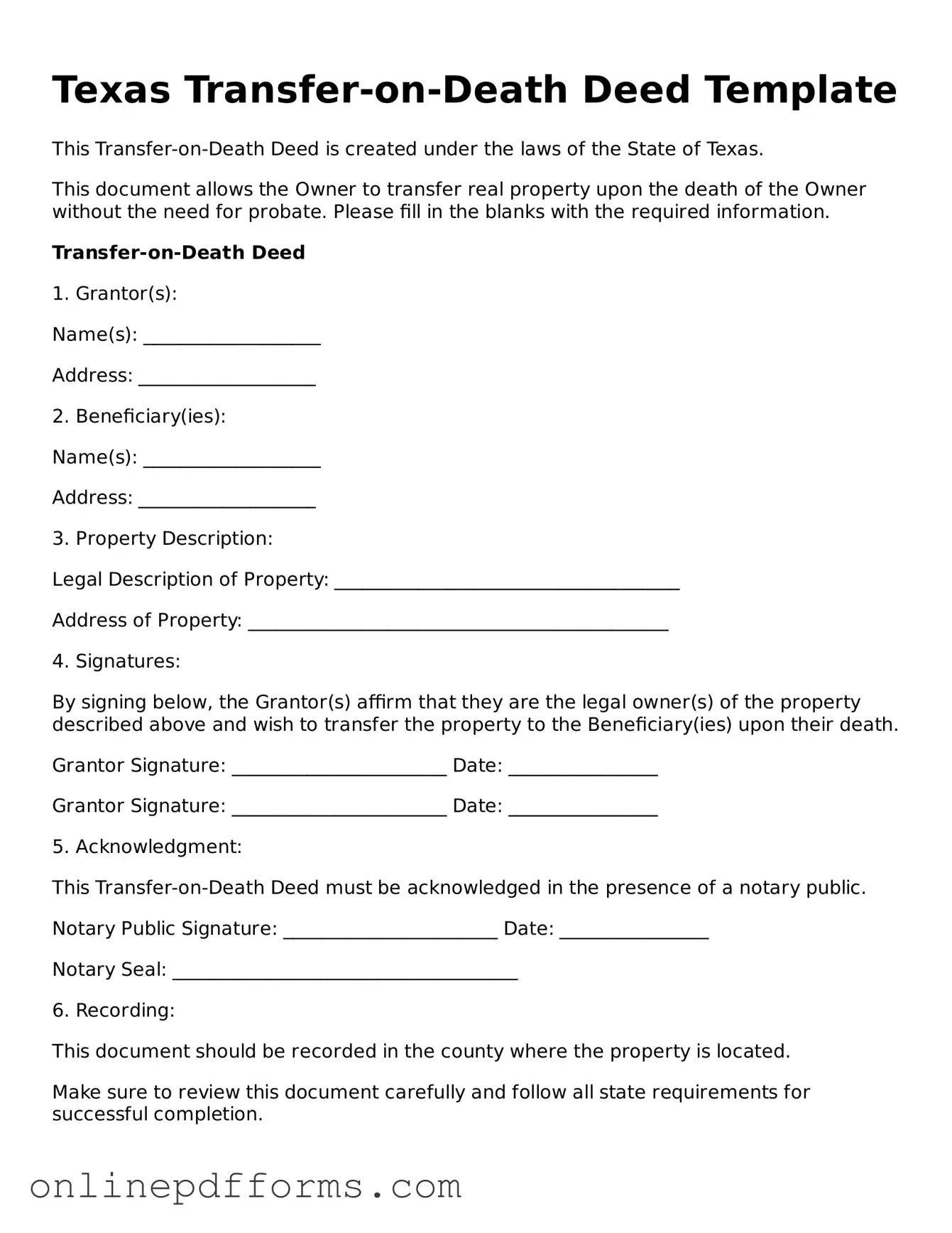Blank Texas Transfer-on-Death Deed Form
The Texas Transfer-on-Death Deed form allows property owners to designate beneficiaries who will receive their real estate upon their death, bypassing the probate process. This legal instrument provides a straightforward way to transfer ownership without the complexities often associated with traditional wills. Understanding this form can simplify estate planning and ensure that assets are passed on according to the owner's wishes.
Ready to simplify your estate planning? Fill out the Transfer-on-Death Deed form by clicking the button below.
Open Transfer-on-Death Deed Editor Now
